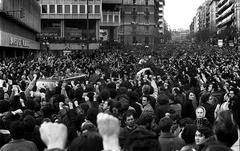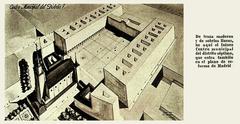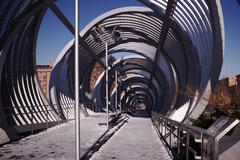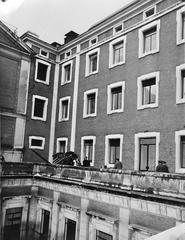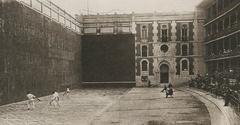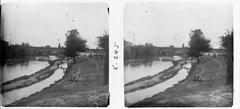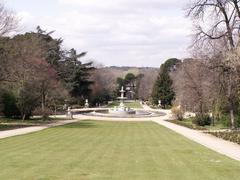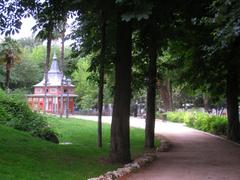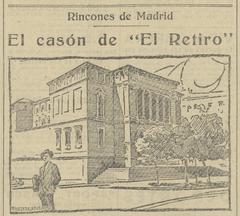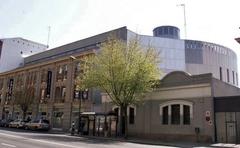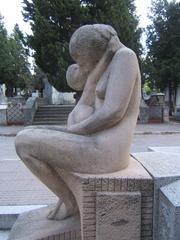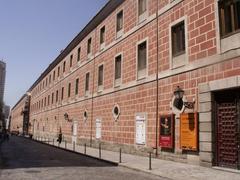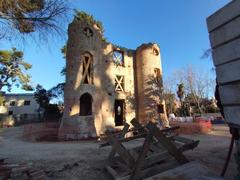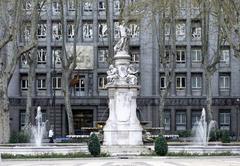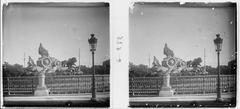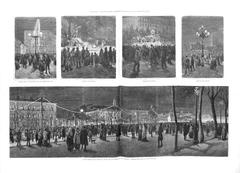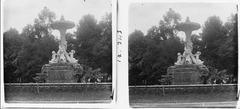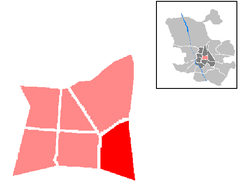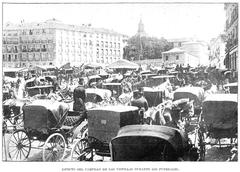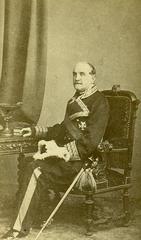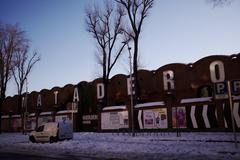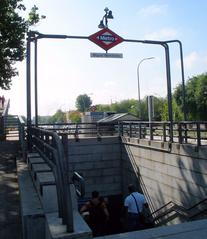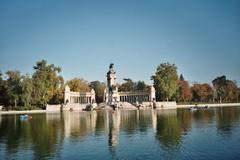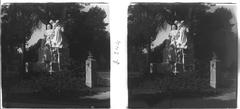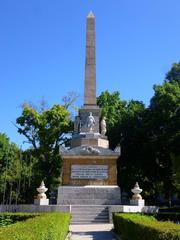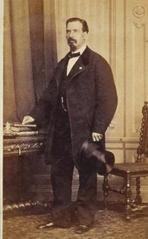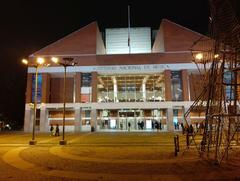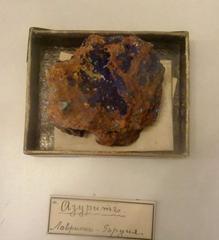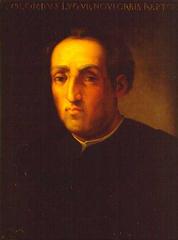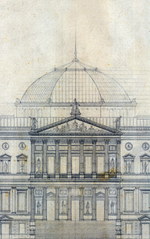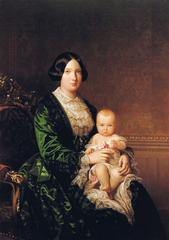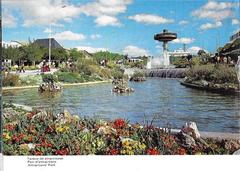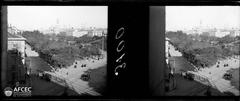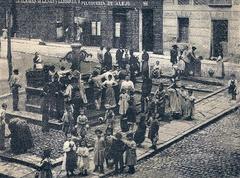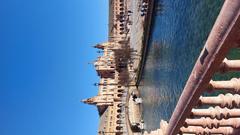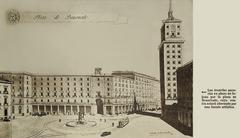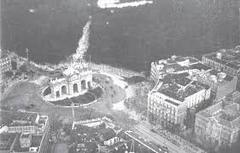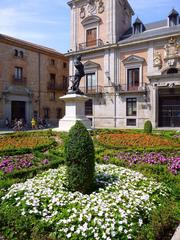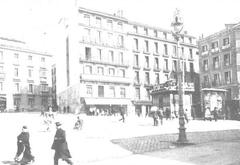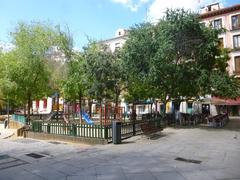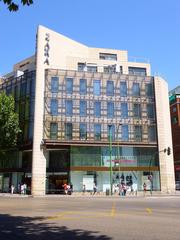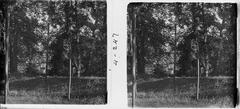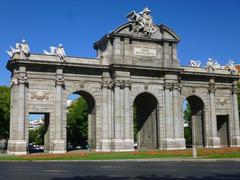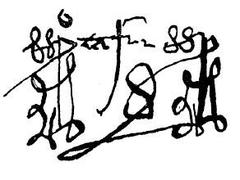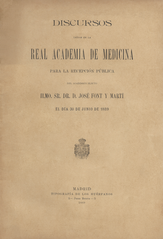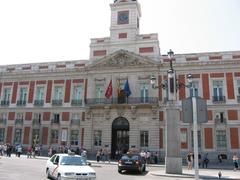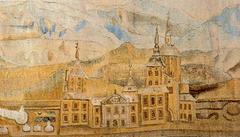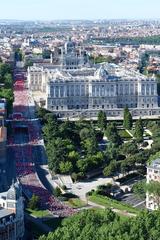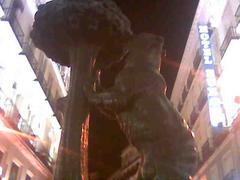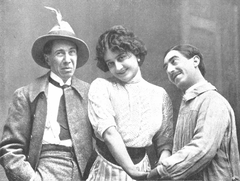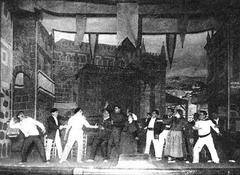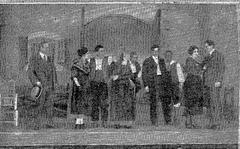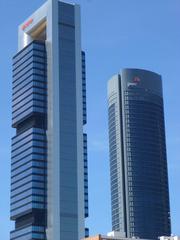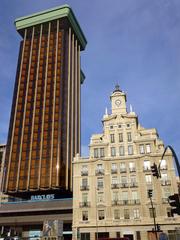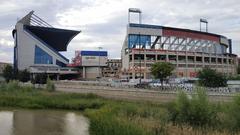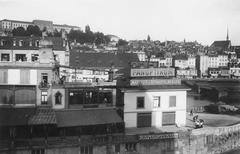Visiting Puente de San Fernando in Madrid: Hours, Tickets, and Tips
Date: 20/07/2024
Introduction
Madrid, Spain, is a city renowned for its rich history, vibrant culture, and stunning architecture. Among its many historical landmarks, the Puente de San Fernando stands out as an iconic symbol of the city’s architectural and cultural heritage. Constructed in the mid-18th century under the reign of King Ferdinand VI, this bridge has not only facilitated transportation across the Manzanares River but has also witnessed significant historical events, including its strategic role during the Spanish Civil War (Madrid No Frills). Designed by the acclaimed architect Pedro de Ribera, the Puente de San Fernando is an exemplary piece of Baroque architecture, characterized by its robust semi-circular arches and ornate design (Structurae). This guide aims to provide comprehensive insights into the history, significance, and practical visitor information about the Puente de San Fernando, ensuring a memorable experience for all who venture to this historic landmark.
Table of Contents
- Introduction
- Origins and Construction
- Architectural Design
- Historical Significance
- Role in the Spanish Civil War
- Restoration and Preservation
- Modern-Day Significance
- Cultural Impact
- Visitor Information
- FAQ
- Conclusion
Origins and Construction
The Puente de San Fernando, located in Madrid, Spain, is a historic bridge that dates back to the 18th century. Commissioned by King Ferdinand VI, the bridge was constructed between 1749 and 1759. The project was part of a broader initiative to improve infrastructure and facilitate transportation across the Manzanares River. The bridge was designed by the renowned architect Pedro de Ribera, who was also responsible for several other significant structures in Madrid (Madrid No Frills).
Architectural Design
The Puente de San Fernando is an exemplary piece of Baroque architecture, characterized by its robust and ornate design. The bridge features a series of semi-circular arches, which were a common architectural element of the period. These arches not only provided structural stability but also added to the aesthetic appeal of the bridge. The use of granite and limestone in its construction ensured durability, allowing the bridge to withstand the test of time (Structurae).
Historical Significance
The bridge played a crucial role in the development of Madrid’s urban landscape. It facilitated the movement of people and goods between the city center and the surrounding areas, contributing to the economic growth of the region. During the 18th and 19th centuries, the Puente de San Fernando was a vital link in the network of roads that connected Madrid to other major cities in Spain (Madrid History).
Role in the Spanish Civil War
The Puente de San Fernando also holds historical significance due to its role during the Spanish Civil War (1936-1939). The bridge was a strategic point for both the Republican and Nationalist forces. Its control was crucial for the movement of troops and supplies. The bridge suffered damage during the conflict but was subsequently repaired, preserving its historical integrity (Spanish Civil War).
Restoration and Preservation
In the 20th century, the Puente de San Fernando underwent several restoration projects to preserve its historical and architectural value. The most significant restoration took place in the 1980s, led by the Madrid City Council. This project aimed to repair the damage caused by the Spanish Civil War and the natural wear and tear over the centuries. The restoration efforts focused on maintaining the original design and materials, ensuring that the bridge retained its historical authenticity (Madrid City Council).
Modern-Day Significance
Today, the Puente de San Fernando is not only a functional piece of infrastructure but also a cultural and historical landmark. It is a popular spot for tourists and locals alike, offering picturesque views of the Manzanares River and the surrounding areas. The bridge is also part of several walking and cycling routes, making it an integral part of Madrid’s recreational landscape (Madrid Tourism).
Cultural Impact
The Puente de San Fernando has been featured in various works of art, literature, and film, highlighting its cultural significance. It has inspired numerous artists and writers, who have captured its beauty and historical importance in their works. The bridge is often depicted as a symbol of Madrid’s rich history and architectural heritage (Madrid Culture).
Visitor Information
For those planning to visit the Puente de San Fernando, it is easily accessible by public transportation. The nearest metro station is Príncipe Pío, which is a short walk from the bridge. Visitors can also explore the nearby attractions, such as the Royal Palace of Madrid and the Almudena Cathedral, making it a perfect addition to a day of sightseeing in the city (Madrid Metro).
Visiting Hours and Tickets
The Puente de San Fernando is open to the public 24/7 and there are no tickets required to visit the bridge. However, guided tours that include the bridge as part of a historical route can be booked through various tour operators in Madrid. It’s best to check with these operators for availability and pricing.
Travel Tips and Nearby Attractions
When visiting the Puente de San Fernando, consider exploring nearby attractions such as the Sabatini Gardens and the Temple of Debod. Wear comfortable walking shoes as the area is perfect for a leisurely stroll. Don’t forget to bring a camera to capture the stunning views of the Manzanares River and the historic architecture.
FAQ
Q: What are the visiting hours for the Puente de San Fernando?
A: The Puente de San Fernando is accessible 24/7.
Q: Is there an entrance fee for the Puente de San Fernando?
A: No, visiting the bridge is free of charge.
Q: Can I book a guided tour that includes the Puente de San Fernando?
A: Yes, several tour operators in Madrid offer guided tours that include the bridge. Check with them for availability and pricing.
Q: What is the nearest metro station to the Puente de San Fernando?
A: The nearest metro station is Príncipe Pío.
Conclusion
The Puente de San Fernando stands as a testament to Madrid’s historical and architectural legacy. Its rich history, from its construction in the 18th century to its role in the Spanish Civil War and subsequent restoration, makes it a significant landmark in the city. Whether you are a history enthusiast, an architecture aficionado, or simply a traveler looking to explore Madrid’s cultural heritage, the Puente de San Fernando is a must-visit destination (Madrid Heritage).
Stay up to date with the latest news and events related to Madrid’s historical sites by following us on social media and downloading our mobile app Audiala. Don’t forget to check out our other related posts for more information on Madrid’s rich cultural heritage.
References
- Madrid No Frills. Exploring the Puente de San Fernando - History, Significance, and Visitor Tips. https://madridnofrills.com/puente-de-san-fernando/
- Structurae. Puente de San Fernando. https://structurae.net/en/structures/puente-de-san-fernando
- Madrid History. Puente de San Fernando. https://madridhistory.com/puente-de-san-fernando
- Spanish Civil War. Puente de San Fernando. https://spanishcivilwar.com/puente-de-san-fernando
- Madrid City Council. Puente de San Fernando Restoration. https://madridcitycouncil.com/puente-de-san-fernando-restoration
- Madrid Tourism. Puente de San Fernando. https://madridtourism.com/puente-de-san-fernando
- Madrid Culture. Puente de San Fernando. https://madridculture.com/puente-de-san-fernando
- Madrid Metro. Puente de San Fernando. https://madridmetro.com/puente-de-san-fernando
- Madrid Heritage. Puente de San Fernando. https://madridheritage.com/puente-de-san-fernando
